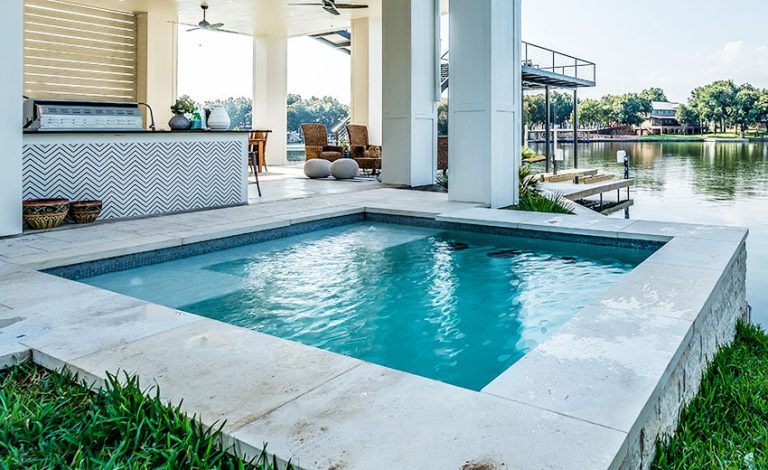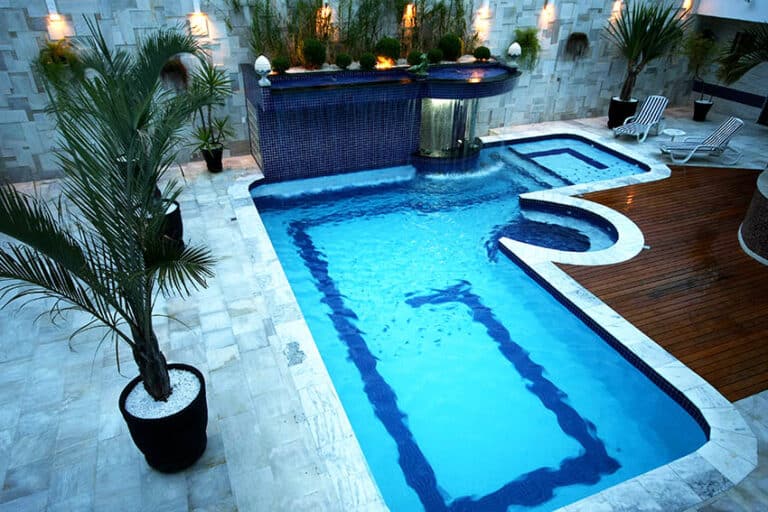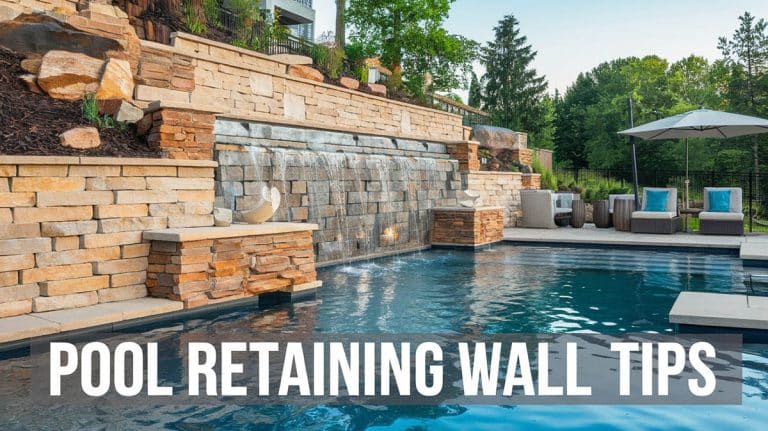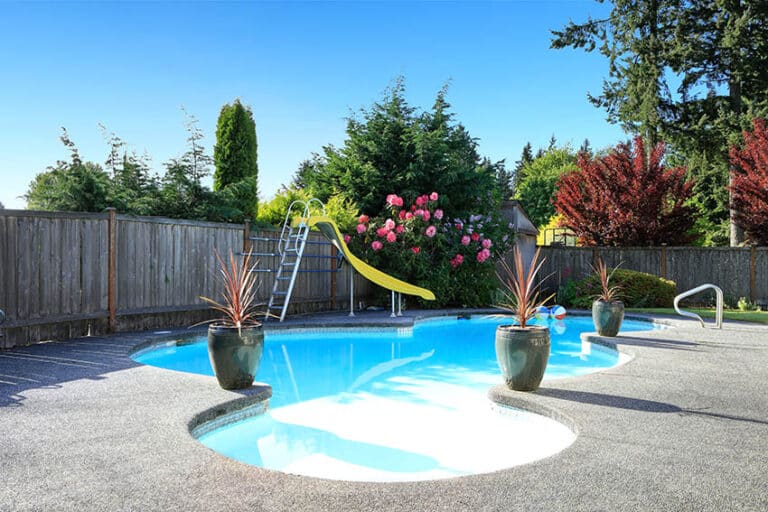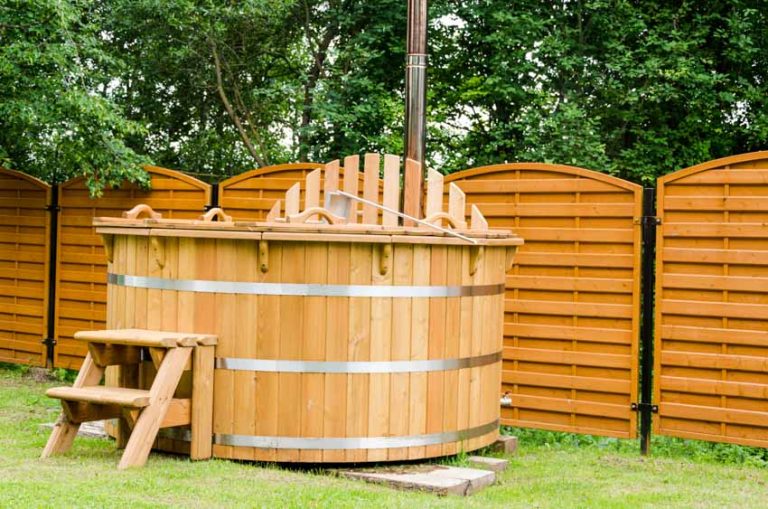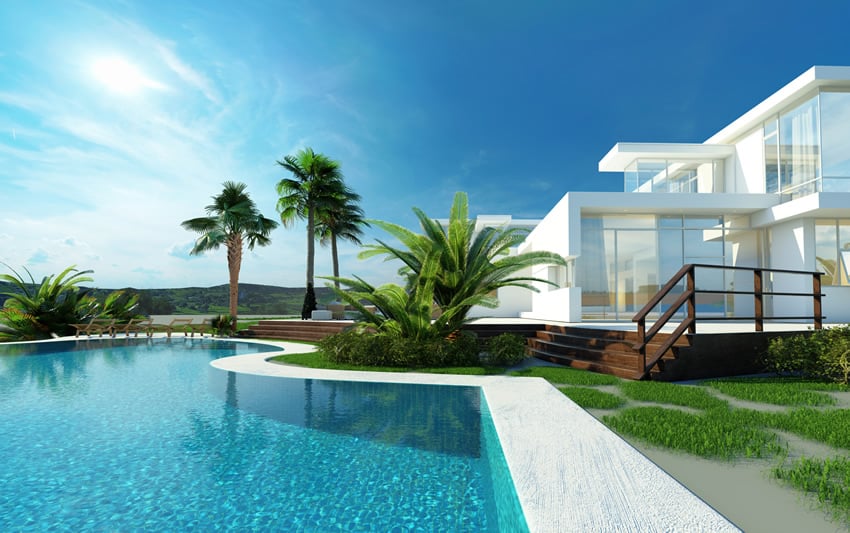Cantilever Pool Deck (Edge & Coping Design Guide)
In-ground swimming pools are an excellent option for any backyard and the perfect centerpiece for stay-cations, summer barbecues, and family gatherings. Part of the many decisions to make when having an in-ground pool installed is the type of deck. Cantilever pool decks typically have a bullnose finish and provide a clean and elegant look to the design.
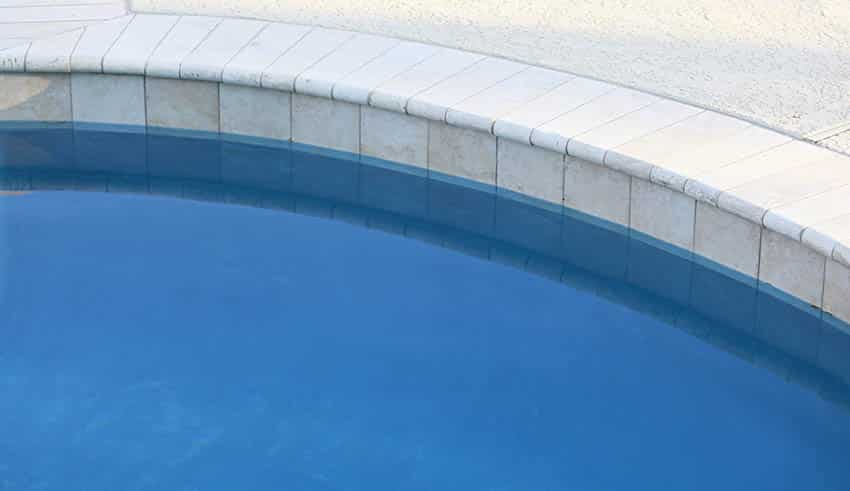
A cantilever deck is an overhang around the pool that hangs slightly over the edge. Many homeowners opt for concrete for the decking. Concrete has been used for pool deck finishes since the 1980s and is the most popular finish. In this guide, we will explore what makes a cantilever deck, what coping is, and possible problems that may arise when using it.
What Is A Cantilever Pool Deck?

A cantilever pool deck refers to the decking that hangs over the pool’s edge and is fixed at one end only. It’s a term commonly used to describe the element that creates the overhanging lip.
This part of a pool’s design provides a smooth, finished edge to the surrounding deck. It completes the leading edge of the decking and can be installed using various types of materials.
More common materials include cement, wood, brick, and natural stone, each a good choice when considering the pool’s design.
Cantilever Concrete Pool Coping
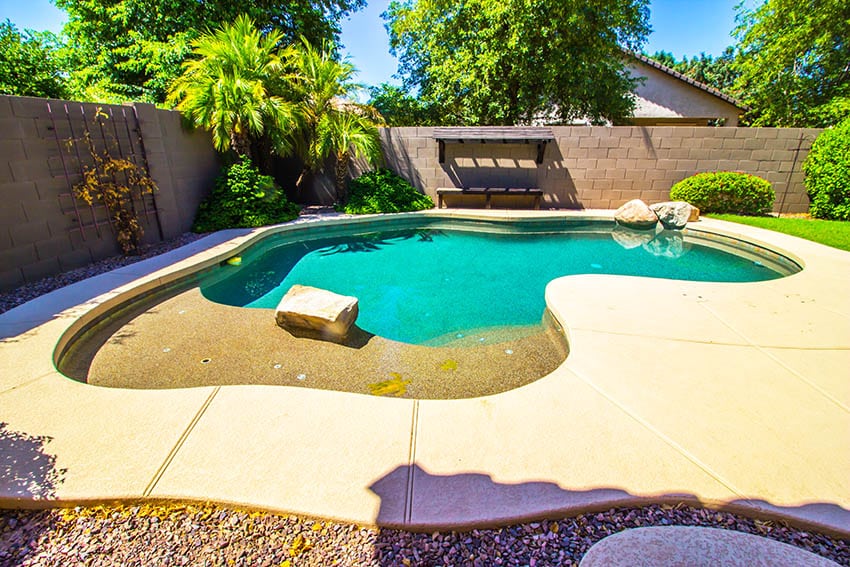
The deck meets the top of the pool’s edge, and the border is called the coping. Coping bridges the meeting of the pool and patio, finishing off the gap. It acts as a frame that protects the surface as well as keeps water from damaging the deck around it. It’s where you sit to dip your legs in the water or stand to dive in.
Coping is practical and also lends a decorative touch to enhance the aesthetics of the perimeter. The coping defines the edges of in-ground pools and acts much like a garden’s border. It contains the water and keeps it from splashing out.
Cantilevered coping has to be poured into a form that creates a bullnose edge extending a bit over the pool’s edge. It’s the most common edge used by contractors when they install in-ground pools.
Cement is a good choice for this decking for several reasons.
- Concrete is durable
- It provides a slip-proof surface
- Concrete is low-maintenance
- Concrete can be stamped with different designs and finishes
- There are quite a few concrete color options
Concrete coping is either poured into forms or can be installed using precast concrete coping. Precast coping comes as pre-fabricated blocks and is available in different textures, patterns, and colors.
This option makes it possible for a homeowner to install the concrete coping themselves. The sections are installed using mortar and caulking, and no special equipment is needed. The cement coping needs to be sealed with a weatherproof sealant that is pH-neutral.
Cantilever Edge Pool
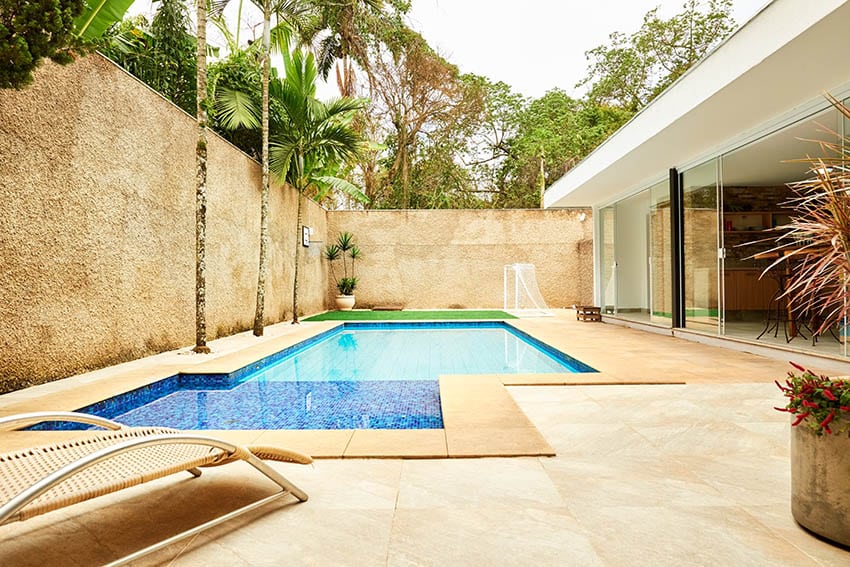
Cantilever edge pools not only look beautiful, but the edge also has many functions. It not only finishes the deck’s look but also protects from accidental slipping into the water. The slightly raised surface provides a good grip when people walk around it.
It also provides a barrier against water that puddles on the patio. The raised edge stops the excess water from running into the pool. It’s also a great way to keep unwanted liquids from entering.
A cantilevered edge is smooth to prevent cuts from sharp edges and provides a seamless transition from the deck to the water. It is also easy to hold on to for swimmers because of its overhang on the pool’s top edge.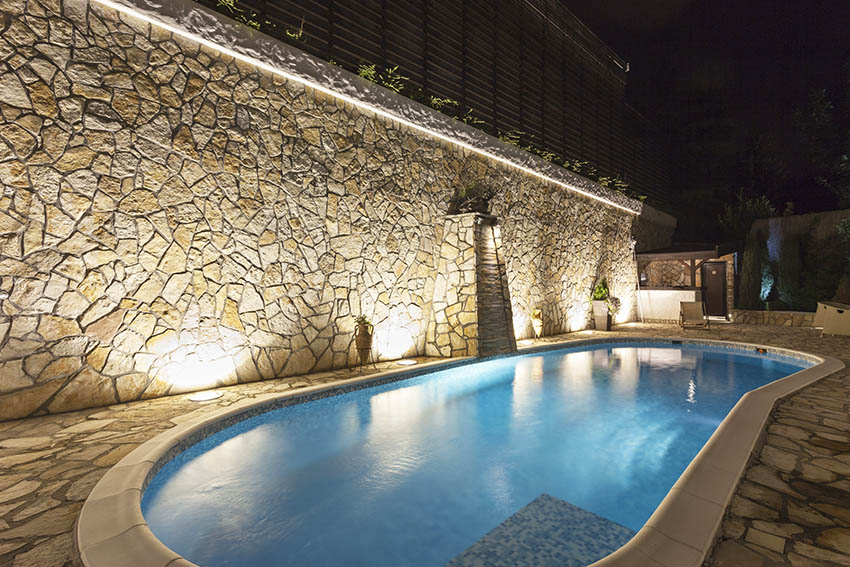
Cantilever Edge Pool Problems
Cantilevered concrete decking must be installed properly by an experienced pool contractor. Special forms are used made of Styrofoam that are temporarily attached to the lip of the pool’s edge. Concrete is poured into the forms, and once the concrete is set, the forms are removed. The forms leave a smooth bullnose finish.
The forms used for coping can be tricky to use. If the contractor does not install the form properly, it may leave an irregular or jagged surface. The surface will not only be unsightly, but it’s also difficult to repair once the cement cures.
Edges may crack or shift, requiring repairs. If the contractor does not pour the concrete properly, and carefully remove the Styrofoam forms, chunks of the concrete may break or fall off.
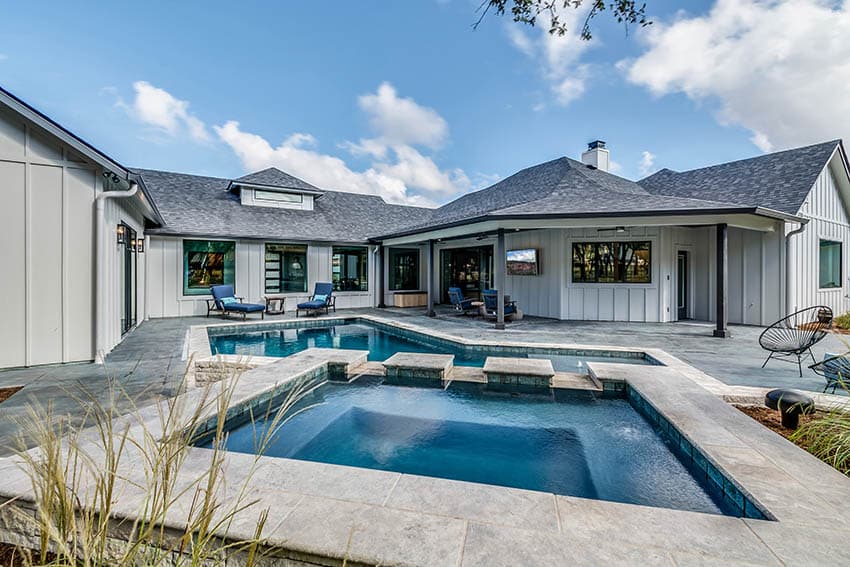
Other problems that can occur with cantilevered concrete pool decking include:
- Hot and cool temperatures cause expansion and contraction
- Soil under the structure may settle and cause the deck edge to crack
- Improper water drainage may cause shifting soil and sand that causes cracks
- Concrete decking tends to stain, especially over time
- Homeowners may find concrete decking is too rough against their skin when getting in and out of the water
To prevent cracking, the joint between the coping and the concrete deck should be sealed with a flexible elastomeric sealer that allows for expansion and contraction.
The flexibility of the sealant allows for movement without damage. An elastomeric sealant also prevents water from getting into cracks.
Expansion joints may be placed between the coping and the deck to prevent cracking. They’re placed every six feet around the edge and added to the deck when the concrete is poured.
These control joints help to avoid cracks on the back of the bond beam where cantilever decks typically crack.
In-ground pool installation must be done by licensed professionals who know how to prepare the hole for the pool’s frame. Inadequate installation may cause shifting and sinking, affecting every part of the design, including the deck’s edge.
If you are creating your own custom plan, there are different swimming pool design software that can help. Many of these will allow you to try out different shapes and finishes to visualize your design and help get the look you want.

